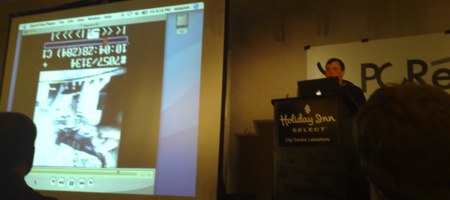Yes, even we were getting tired of that Indiana Jones marathon on TV. So, we ventured online to find something entirely too geeky for a Sunday afternoon. The Future of the Internet and How to Stop It is a presentation Harvard Law School professor Jonathan Zittrain gave at Princeton near the end of March.
He begins by covering early 20th century “sterile” technology like tabulation machines that were rented by the census bureau. The machines didn’t encourage any sort of innovation. Next he talks about “generative” technology like the internet and modern OSes where anyone can build whatever they want. The final step is the more recent move to what he calls “tethered” technology. These are the systems with upgradeable firmware where devices can ship with unfinished features and remove features after the consumer has already purchased the device. He uses the iPhone as an example of this walled garden that could hurt innovation. Watch the video for his thoughts on this new world and how he thinks it could be fixed.












